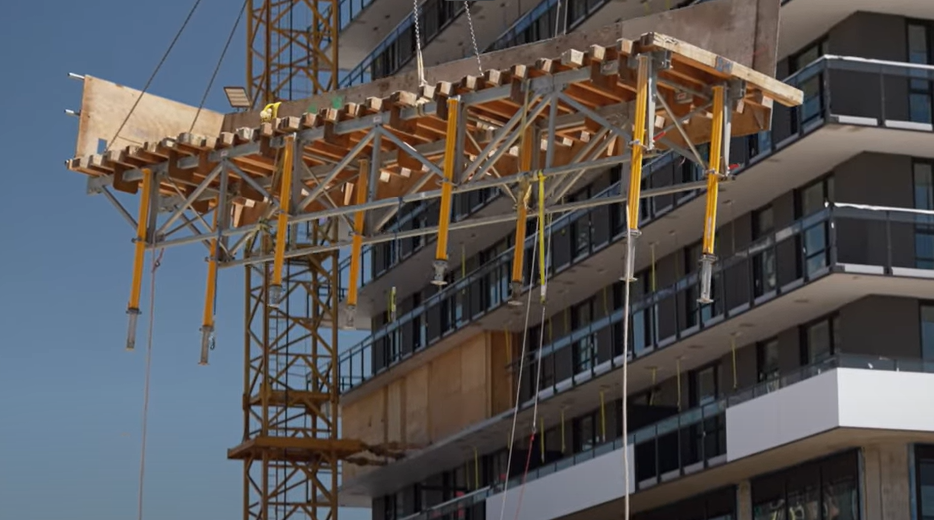‘From hurricanes to winds to floods, it’s essential that you and everyone else on the site plan accordingly’

Spring brings warmer temperatures, which are usually more ideal for construction projects than winter conditions. However, spring still comes with various weather hazards that you must look out for.
From hurricanes to winds to floods, it’s essential that you and everyone else on the site plan accordingly. At times, it’s easier to plan ahead by simply checking the weather. Other times, though, storms appear in seconds. In these instances, workers must act efficiently to protect themselves, the equipment, and the site.
With the following steps, everyone can remain safe this spring.
1. Use PPE
Personal protective equipment (PPE) is essential for any time of year, but springtime brings unique needs. First, workers need anti-fogging spray and clean cloths for their goggles or protective eyewear. The moisture of springtime can easily fog up goggles and prevent clear vision.
Workers should also wear heavy-duty boots and gloves, plus masks when necessary. With boots and gloves, it’s important to clean off any mud or moisture to prevent slips or accidents.
Last, workers should wear high-visibility vests when on-site. These vests help them stand out at night or during overcast days.
2. Check Drainage
Floods can be dangerous, and they can come at unpredictable times. In areas that get snow during the winter, spring brings snowmelt, which can quickly turn to a flood if temperatures get high quickly. In addition, heavy rainfall during spring can cause a flash flood.
Checking drainage at every site is an essential proactive step. Since the construction industry includes countless professions, it’s critical to work with experts in drainage and flooding. Then, you can check daily how each site will fare should a flood occur.
When floods happen, it’s best to quickly move equipment to higher, drier ground. That way, the water doesn’t damage any valuable materials.
3. Protect Materials
Protecting materials can require a few different steps, since workers need countless heavy-duty machines on the site to tackle a range of tasks in multiple disciplines. You may want tents to put valuable items under during rainfall or even water-proof certain machines. However, it’s critical to factor wind into your protection steps.
Wind can knock down unstable walls or carry away loose materials. To prevent these occurrences, you can brace and tether walls, and you can put heavy tarps over soil or sand to keep those piles safe.
It’s important to remember that you shouldn’t add drywall, flooring, or millwork to a project until the team completes the windows, doors, and roof — all of which should be wind- and waterproof to prevent material damage.
4. Stop the Project
Sometimes, you need to call it quits for the day. Extreme weather conditions like wind, hurricanes, lightning, and floods can be too dangerous for the team to work in. During these hazardous conditions, it’s best to end on-site work for the day and shift inside.
The above steps will help the equipment and site stay safe during the storm. Then, the team can slowly pack up for the day, remembering not to rush, since that can lead to more accidents.
If the weather conditions aren’t going to last long, operations can resume when it’s safe. In instances of lightning, you’ll have to stay indoors until 30 minutes after the last clap of thunder.
5. Monitor the Weather
Planning ahead by checking the weather is essential. This simple step can help you see when the optimal working times will be each day. However, it’s also important to check the weather throughout the day. Sometimes, a storm or shower can pop up without warning and cause issues for the site.
To get as much of a head-start as possible, it’s best to keep an eye on the weather. Apps and news channels can also have information about local flooding hazards, too.
As it gets warmer, you’ll need to watch out for heat exhaustion or heat stroke. Workers must hydrate frequently and rotate shifts throughout the day to prevent any heat-related illnesses.
6. Create an Action Plan
As you progress with projects into spring, you’ll want to have a plan of action for every scenario. Using the steps above, you can factor in sequences of steps that workers take in various weather conditions. For instance, when it starts thundering, workers can secure equipment, make sure drainage is working, and retreat inside until it’s safe.
The action plan should also educate workers on what to do if an injury happens. Most workplaces have a number to call immediately for assistance. The team should follow each step of that process.
Then, as issues arise, you can factor them into the plan so everyone on- and off-site knows what to do in any situation.
Top Safety This Spring
These six steps help any construction site create the safest workplace for any hazardous conditions that may come this spring. Staying vigilant and using the best proactive steps are essential to on-site safety. Now, it’s time to plan and prepare.






